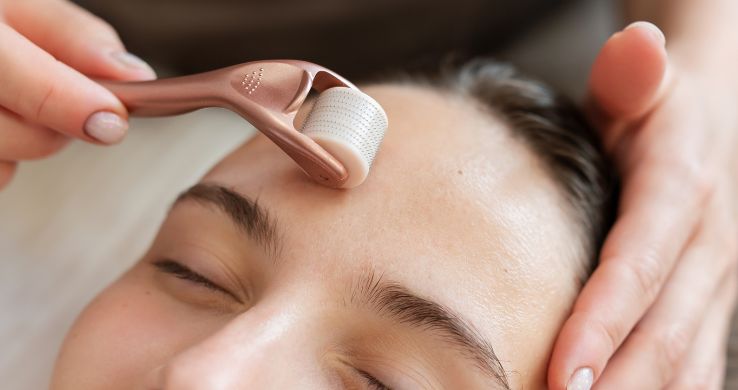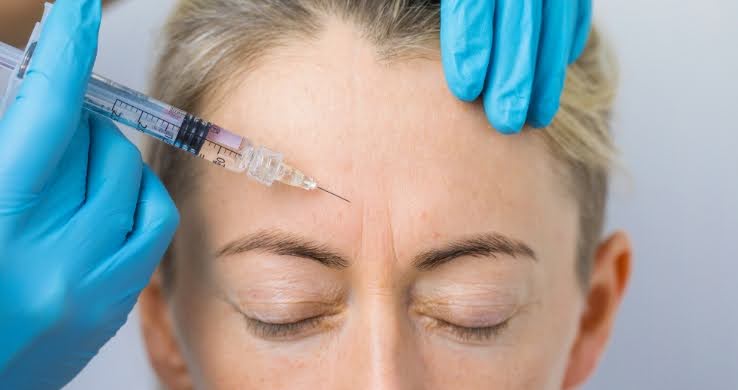Dermal fillers have gained popularity as a non-invasive cosmetic treatment option for restoring volume and fullness to the face, plumping lips, softening facial creases, and improving the appearance of scars. However, one common question that individuals contemplating dermal fillers often ask is, “How long do dermal fillers last?” In this comprehensive guide, we will delve into the various types of dermal fillers, factors affecting their longevity, and provide insights on how to achieve optimal results.
Understanding Dermal Fillers: Types and Benefits
Dermal fillers come in several types, each with its own unique composition and benefits (1). The most widely used types include hyaluronic acid fillers, calcium hydroxylapatite fillers, and poly-L-lactic acid fillers. Hyaluronic acid fillers are popular due to their ability to retain moisture and provide a natural look. They are typically used to treat facial wrinkles and add volume to the lips. These fillers can last between 6 to 18 months, depending on factors such as the individual’s metabolism and the specific product used (2).
Calcium hydroxylapatite fillers work by stimulating collagen production, providing a long-lasting effect. They are commonly used for filling deeper facial creases, such as nasolabial folds and marionette lines. These fillers can last up to 12 months or more. Poly-L-lactic acid fillers are known for their ability to stimulate collagen production over time. They are often used for treating volume loss in the cheeks and can have effects lasting up to 2 years.
Understanding the different types of dermal fillers and their specific benefits can help individuals make informed decisions regarding their treatment options.
Factors Influencing the Longevity of Dermal Fillers
The duration of dermal fillers can vary from person to person due to several factors that influence their longevity. These factors include the type of filler used, the injection site, individual metabolism, and lifestyle choices (3). For example, fillers injected into areas with a lot of movement, such as the lips, may break down more quickly compared to fillers injected into areas with less movement. Additionally, some individuals may have a faster metabolism, causing the filler to be metabolized more quickly.
Lifestyle choices, such as exposure to the sun, smoking, and excessive alcohol consumption, can also impact the longevity of dermal fillers. Protecting the skin from sun damage, maintaining a healthy lifestyle, and following a proper skincare routine can help individuals maximize the longevity of their fillers.
How Long Do Different Types of Dermal Fillers Last?
Determining how long a specific dermal filler will last depends on various factors, including the type of filler used and its intended purpose. While there is no definitive timeframe for all fillers, certain general guidelines can help individuals understand the expected duration. Hyaluronic acid fillers, such as Restylane and Juvéderm, typically last between 6 to 18 months. However, factors such as the specific product used, the area of application, and individual metabolism may influence the longevity.
Calcium hydroxylapatite fillers, including Radiesse, are known for their durability and can last up to 12 months or more. These fillers are particularly suitable for areas with deeper lines or volume loss. Poly-L-lactic acid fillers, such as Sculptra, gradually stimulate collagen production, resulting in a longer-lasting effect. These fillers can provide results for up to 2 years, making them a popular choice for individuals seeking longer-term improvements in facial volume and contour.
It is important to note that these durations are averages, and individual results may vary. Factors such as the amount of product used, the skill of the injector, and the individual’s unique physiology can all affect the longevity of dermal fillers.
Maximizing the Longevity of Dermal Fillers
While the duration of dermal fillers is influenced by various factors, individuals can take certain steps to maximize the longevity of their results (4). Firstly, protecting the skin from sun damage is essential. UV exposure can break down the filler more quickly, leading to a shorter duration of effectiveness. Wearing sunscreen, seeking shade, and wearing protective clothing can help preserve the filler.
Maintaining a healthy lifestyle can also have a positive impact on the longevity of fillers. Eating a balanced diet, staying hydrated, and getting regular exercise can support overall skin health and prolong the effects of dermal fillers. Adhering to a personalized skincare routine is another important aspect. Using products with active ingredients that promote collagen production, such as retinol or peptides, can support the filler’s longevity and the overall health of the skin.
Additionally, staying hydrated, getting enough rest, and avoiding excessive stress can help maintain the effectiveness of dermal fillers.
Knowing When to Consider Maintenance Treatments
Understanding when it is time for maintenance treatments is crucial for individuals to plan for touch-up appointments effectively. As dermal fillers gradually break down over time, certain signs may indicate the need for additional treatments. Common indicators include the gradual return of wrinkles or volume loss, decreased plumpness in the treated areas, and the fading of initial results. Regular assessments with a qualified professional can help individuals identify these signs and plan for maintenance treatments accordingly.
The frequency of maintenance treatments varies depending on the type of filler used and individual factors. Typically, touch-up treatments are recommended every 6 to 12 months to maintain the desired results.
The Role of Experienced Professionals in Long-Lasting Dermal Fillers
The expertise of the injector significantly impacts the longevity and overall outcome of dermal filler treatments. Seeking qualified and experienced professionals ensures that individuals receive personalized care and accurate product placement, maximizing the life span of the fillers. Experienced professionals understand the intricacies of different fillers, injection techniques, and the anatomy of the face. They can provide tailored advice and treatment plans based on individual needs, leading to long-lasting and natural-looking results.
Conclusion
For those contemplating the benefits of dermal fillers or seeking to explore their options further, Effortlessway Aesthetics & Spa offers a pathway to achieving your aesthetic goals with confidence. Our team of top-rated filler specialists is committed to providing personalized care, utilizing advanced dermal filler techniques to ensure results that not only meet but exceed your expectations.To discover how we can assist you in refreshing your look and enhancing your confidence, don’t hesitate to reach out. Contact us at effortlesswaytoday@gmail.com or call 929-246-0405. Begin your journey with us today and take the first step towards a more confident and rejuvenated you.
References
- Sánchez-Carpintero I, Candelas D, Ruiz-Rodríguez R. Dermal fillers: types, indications, and complications. Actas Dermo-Sifiliográficas (English Edition). 2010 Jan 1;101(5):381-93.
- Funt D, Pavicic T. Dermal fillers in aesthetics: an overview of adverse events and treatment approaches. Plastic and Aesthetic Nursing. 2015 Jan 1;35(1):13-32.
- De Boulle K, Heydenrych I. Patient factors influencing dermal filler complications: prevention, assessment, and treatment. Clinical, cosmetic and investigational dermatology. 2015 Apr 15:205-14.
- Madnani N, Vedmurthy M, Parthasarthi A, Dhawan S, Kandhari R, Pillai R, Nischal KC. Expert opinion on pre and post procedure care in aesthetic dermatology. International Journal of Research in Medical Sciences. 2022 Apr;10(4):991.





